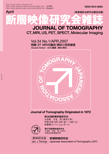IVRにおけるフラットパネル搭載C-armCT:DynaCTで可能となる新たな展開
橋本 東児、清野 哲孝、本田 実、橋爪 崇、新城 秀典、扇谷 芳光、後閑 武彦
昭和大学 放射線医学教室
Flat Detector C-armCT for Interventional Radiology: New Development with DynaCT
Toshi Hashimoto, MD., Noritaka Seino, MD., Minoru Honda, MD., Takashi Hashizume, MD.,
Hidenori Shinjo, MD., Oogiya Yoshimitsu, MD., Gokan Takehiko, MD.
Departmetn of Radilogy, Showa University School of Medicene
抄録
フラットパネル検出器を搭載したC-アームを200度回転して得られるコームビームCTをC-armCTとする。C-armCTで得られるデータは、軟部組織濃度の分解能を有し、完全な等方向ボクセルの精細な解像度を持つ。インターベンショナルラジオロジーの手技中に、患者移動なくCT様のボリュームデータを得られる意義は大きい。DynaCTはシーメンスのAXIOM Artisシリーズで提供されるC-armCTであるが、ソフトとハードの統合が得られたシステムである。DynaCTはIVR手技を支援する新たなモダリティーとも考えられる。現時点のDynaCTの位置付けと今後の展開を実際の症例を供覧しつつ述べる。
Summary
In this paper, C-armCT means cone beam CT imaging by rotating flat panel detector on angiographic C-arm with 200 degrees. C-armCT offers volume data with soft tissue contrast resolution and have high spacial resolution with true isotropic voxel. Interventional Radiologist can get the major advantage of immediate CT like volume data without any patient's reposition. DynaCT is a kind of C-armCT system including integrated software and hardware on AXIOM Artis from Siemens medical solution company. So, the system of DynaCT is considered as a new imaging modality supporting interventional procedures. We will show how to use DynaCT in clinical cases and discuss the paresent status and potential application.
Key words:
cone beam CT, angiography, interventional radiology,biopsy
|

